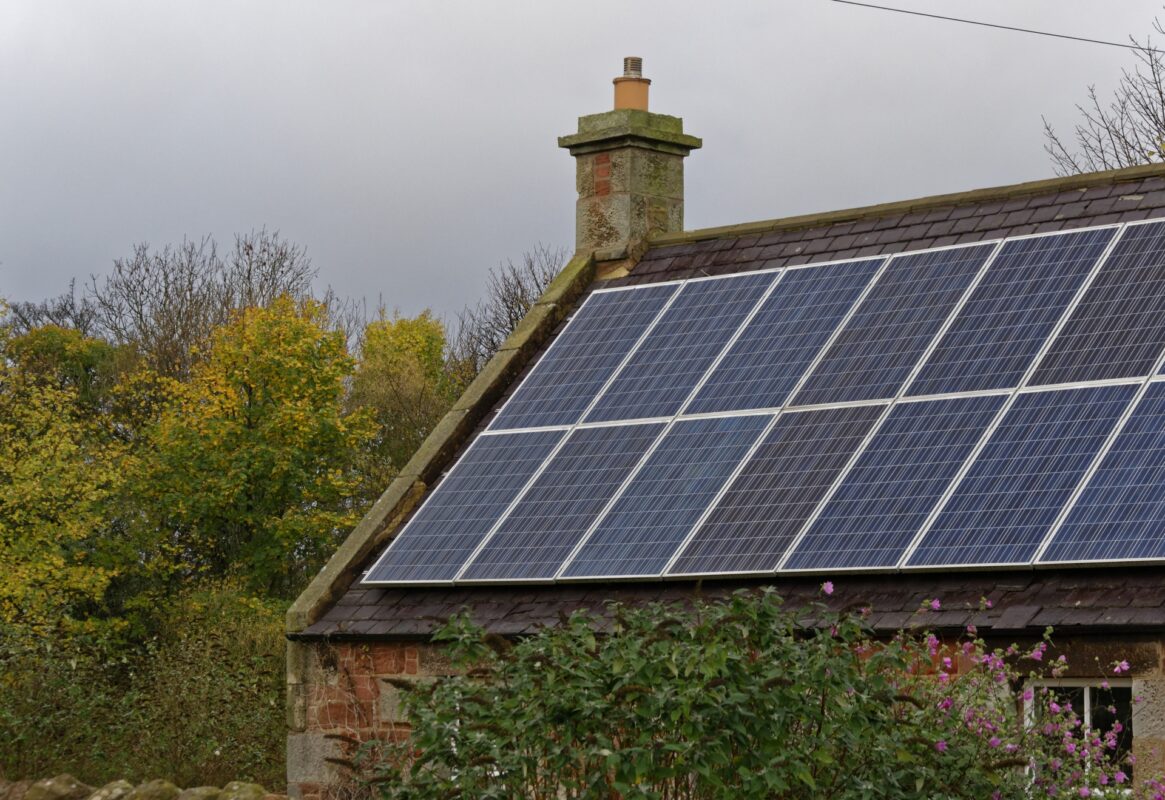
Solar Energy Scotland’s report, ‘The Value of Solar Heat: The Role of Solar Heat Technologies in Meeting Scottish Net Zero Targets’, estimated that installing solar systems on domestic properties could save between £313-£961 on energy bills. Image: Kevin Phillips (Public Domain Pictures).
Solar Energy Scotland has called for the incorporation of solar photovoltaic (PV) and solar thermal systems into Scotland’s public policy agenda owing to their “significant carbon and cost benefits”.
Modelling conducted for Soler Energy Scotland’s The Value of Solar Heat: The Role of Solar Heat Technologies in Meeting Scottish Net Zero Targets report showed that between £313-£961 can be saved on energy bills by installing solar systems.
The briefing from the trade association stated that the cost of generating power using onsite heat technologies is much lower than grid electricity and also reduces “the need for investment in the broader energy system infrastructure” at the consumers expense. For this reason, the briefing continued, homeowners in Scotland need to be supported in reducing their carbon emissions by installing solar energy systems.
A key way to accelerate the installation of solar heat and storage technologies identified by the briefing is to add solar PV to the heat pump specification in the new Building Regulations.
Private homeowners in existing houses, the briefing added, ought to be supported by prolonging incentives for onsite renewable heat technologies – such as the Home Energy Scotland loan scheme – until at least 2030. Broadening the criteria for Wamer Homes Scotland was also recommended by the briefing to help the uptake of renewable heat in Scotland.
“With landmark legislation committing Scotland to becoming a net zero society by 2045, and the cost of living crisis, now really is the time to make it as simple and efficient as possible for consumers to switch to using solar and take more control of their own affordable energy future” said John Forster, chair of one Scotland’s suppliers of integrated solar solutions, Forster Group.
The briefing includes four case studies for the carbon and financial benefits of low-carbon heat in different households.
A 2kW solar array, funded by an unsecured loan at 5% interest over five years would partly power a household’s direct electric heating system and could save a mid-terrace in northeast Scotland £961 per annum.
More significant savings were found if a household was to combine solar PV with a battery system. For example, a well-insulated detached house in the west of Scotland fitted with solar panels and a heat pump would save £2,603, and as much as £2,786 with the addition of a infrared heating system.
The briefing reported that even a semi-detached house located in the east of Scotland, facing east-west away from the sun, could generate savings from £1,800 to £2,400 with modest renewable improvements including solar PV and battery storage systems obtained with a low-interest green mortgage and according to their choice of heating system.
The fourth case study used in the briefing is a socially rented end-of-terrace household. After splitting the financial savings of PV and thermal systems with the housing association, tenants could save roughly £496-£772 in the first year alone.
“As Scotland makes great strides in the decarbonisation of electricity, heat and transport, it is vital that affordability and energy security is at the forefront. Solar is unique in its ability to be deployed locally and impact fuel bills directly. Stable policy to support this is required,” said Josh King, vice chair of Solar Energy Scotland.
The briefing follows the Scottish Governments promise earlier this month for a “much bigger, renewed focus” on solar power in the upcoming Energy Strategy draft.
Meanwhile, Solar Energy UK – the parent trade body of Solar Energy Scotland – released its Value of New Build Solar report last week, which found that installing solar PV and a battery energy storage system could save a household around £40,000 over the lifetime of the technologies.
